Mui Ne
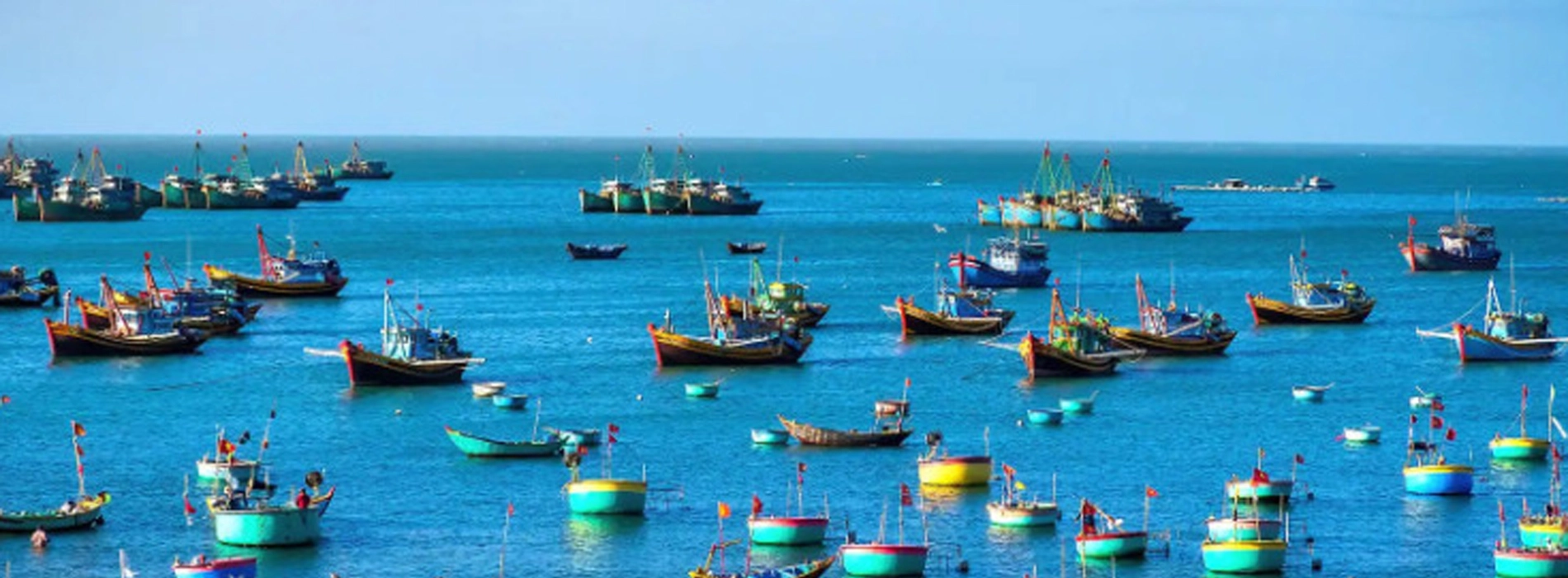
Mui Ne, situated along the picturesque southeastern coast of Vietnam, emerges as a captivating destination that seamlessly blends natural wonders with cultural charm. Renowned for its mesmerizing sand dunes, the landscape is adorned with both the warm reddish tones of the Red Sand Dunes and the pristine, lighter-colored sands of the White Sand Dunes. Beyond its sandy expanses, the town offers the enchanting Fairy Stream, a freshwater oasis winding through a canyon, inviting visitors to embark on a barefoot journey through its refreshing waters and unique rock formations.
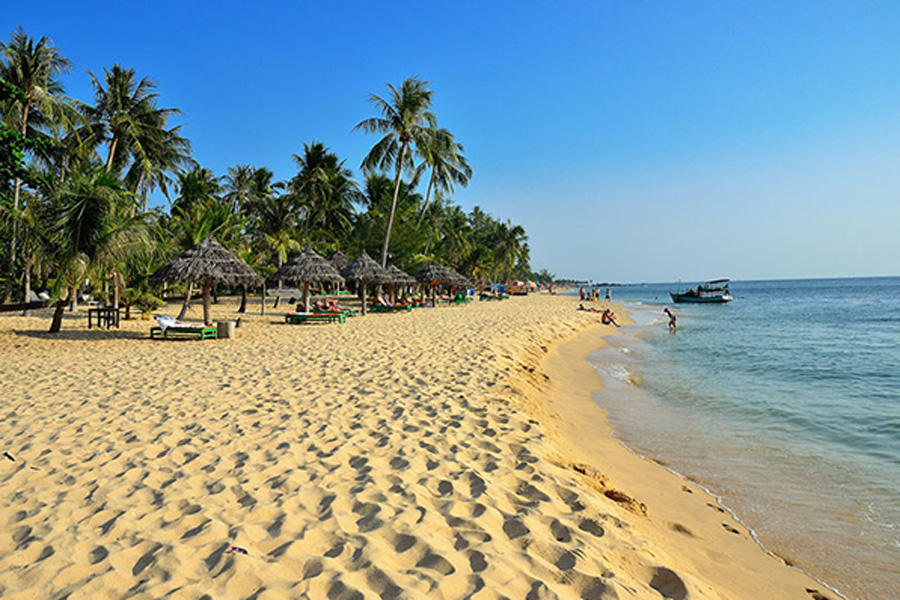 Mui Ne Beach
Mui Ne Beach
The heart of Mui Ne beats in its vibrant fishing village, where traditional boats adorn the coastline and provide a glimpse into the daily lives of local fishermen. Mui Ne Beach, with its consistent ocean breezes, has become a haven for wind and kite surfers seeking exhilarating experiences against the backdrop of the azure sea. Delving into the town's historical fabric, the Po Shanu Cham Towers atop Ong Hoang Hill stand as relics from the Cham civilization, offering insights into the region's rich past
Nestled along Vietnam's southeastern coast, Mui Ne bears witness to a captivating journey through time, where the sands of history have shaped its landscape and identity. In the shadows of Mui Ne's sun-kissed beaches and rolling dunes lie remnants of the Cham Empire, manifested in the weathered stones of the Po Shanu Cham Towers. These ancient structures, with their intricate carvings and spiritual significance, offer a glimpse into the once-thriving Hindu-Buddhist civilization that flourished in the region.
 Sea scene in Mui Ne
Sea scene in Mui Ne
During the colonial era, as Vietnam came under French rule, Mui Ne's coastal position likely played a role in the broader economic and strategic considerations of the time. While specifics about this period in Mui Ne's history may not be as prominent in historical records as those of larger cities, the traces of colonial influence have left subtle imprints on the town's evolution.
The Vietnam War, a pivotal chapter in the nation's history, echoes faintly in Mui Ne. Though the region did not witness the intense battles experienced by central provinces, the war's ripples touched every corner of the country, and Mui Ne's coastal tranquility bore witness to the broader struggles for independence and reunification.
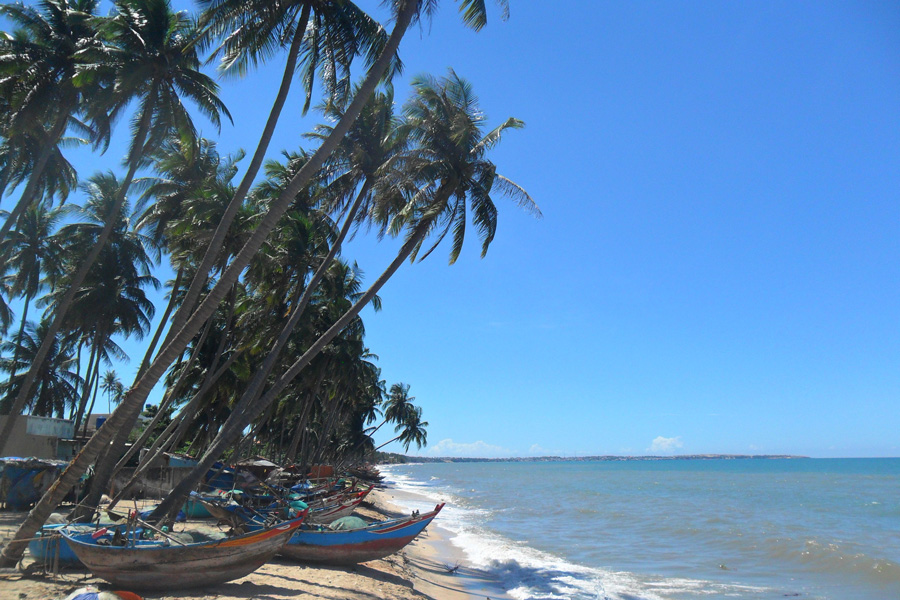 Small boats in Mui Ne
Small boats in Mui Ne
In the post-war era, Mui Ne underwent a transformative journey. What was once a modest fishing village gradually evolved into a vibrant tourist destination, drawing visitors with its unique natural attractions. The iconic sand dunes, where the Red and White Sands create a mesmerizing contrast, became emblematic of Mui Ne's allure, contributing to the town's rise as a sought-after destination for both domestic and international travelers.
Today, Mui Ne stands at the intersection of its storied past and dynamic present. The ancient Cham Towers, the echoes of colonial history, and the subtle imprints of war converge with the vibrant energy of a town embracing tourism, offering a unique blend of history, culture, and natural beauty. As visitors traverse the sandy landscapes and explore the cultural richness, Mui Ne unfolds as a living testament to resilience, adaptation, and the enduring spirit of a coastal gem on Vietnam's historical canvas.
See more: Northwest Motorbiking 10 days
The best time to visit Mui Ne depends on your preferences for weather and activities. Generally, Mui Ne experiences a tropical climate with distinct wet and dry seasons. Here's a breakdown of the seasons to help you plan your visit:
1. Dry Season (November to April): This period is considered the best time to visit Mui Ne. The weather is relatively dry, and temperatures are more moderate. The months from December to February are particularly popular, offering comfortable temperatures for outdoor activities. During this time, you can enjoy the beaches, explore the sand dunes, and partake in water sports without the interruption of heavy rainfall.
2. Hot Season (April to August): The months from April to August constitute the hot season in Mui Ne, with temperatures often reaching their peak in June and July. While it can get quite hot during these months, they are still suitable for beach activities and water sports.
See more: Vietnam Family Holiday
Mui Ne boasts a variety of attractions, but some of the top highlights that visitors often find captivating include:
1. Sand Dunes (Red and White Sand Dunes): The iconic sand dunes are among the most recognized features of Mui Ne. The Red Sand Dunes, with their warm reddish hues, and the White Sand Dunes, featuring lighter-colored sands, offer a surreal landscape. Visitors can engage in activities such as sand sliding and quad biking for a thrilling experience.
 Sand Dunes (Red and White Sand Dunes)
Sand Dunes (Red and White Sand Dunes)
2. Fairy Stream (Suoi Tien): The enchanting Fairy Stream is a freshwater stream that winds through a canyon, offering a serene and picturesque setting. Walking barefoot along the stream allows visitors to appreciate the cool waters and the unique rock formations.
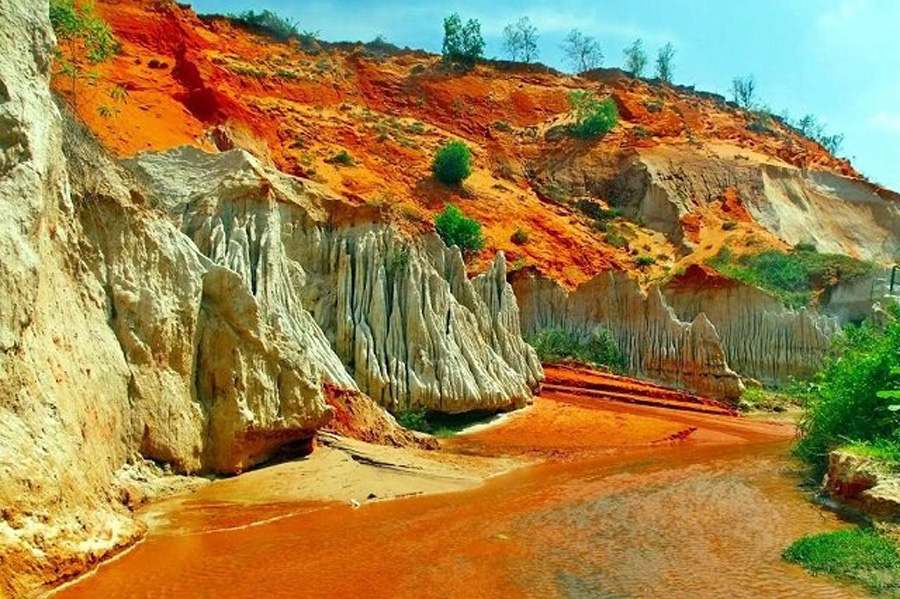 Fairy Stream in Mui Ne
Fairy Stream in Mui Ne
3. Mui Ne Beach: The long and beautiful Mui Ne Beach is a popular spot for relaxation and water sports. The consistent winds make it a prime location for wind and kite surfing. The beach's golden sands and vibrant atmosphere attract both locals and tourists.
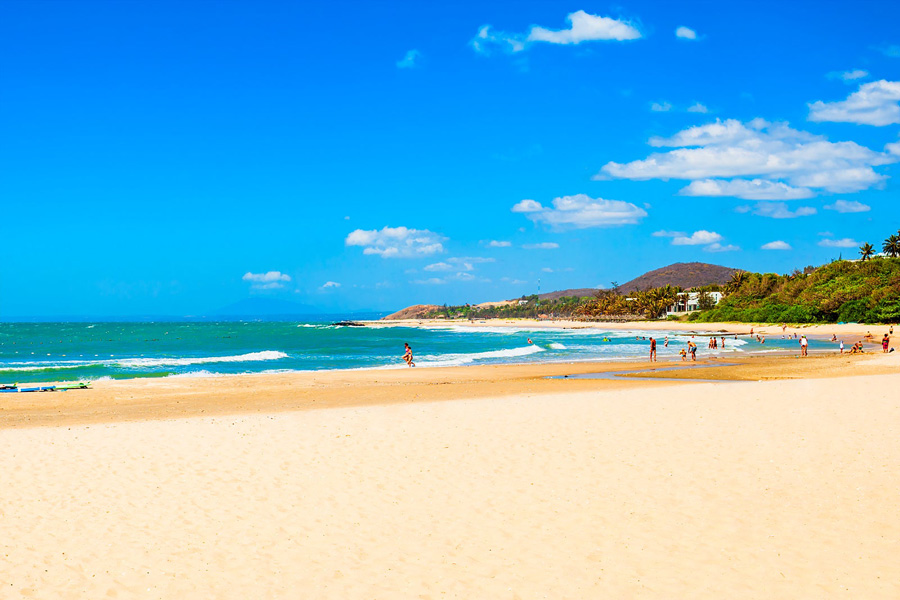 Mui Ne Beach
Mui Ne Beach
4. Mui Ne Fishing Village: The bustling fishing village provides a glimpse into the local maritime culture. Colorful fishing boats line the coast, and visitors can observe the daily activities of fishermen, adding a touch of authenticity to the coastal experience.
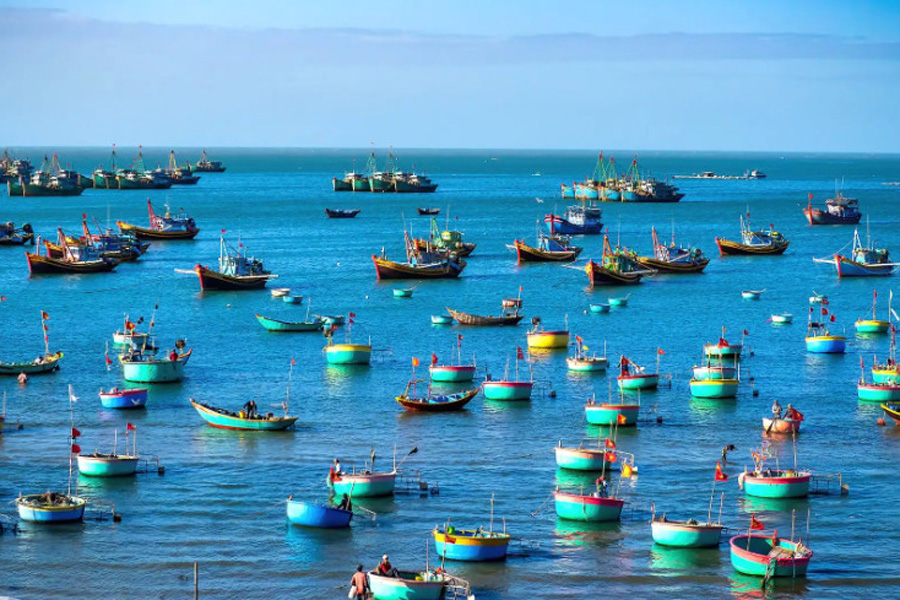 Mui Ne Fishing Village
Mui Ne Fishing Village
5. Mui Ne Market: The local market is a vibrant hub where visitors can immerse themselves in the daily life of Mui Ne. Fresh produce, seafood, and a variety of local products are on display, offering a sensory feast and an opportunity to engage with the local community.
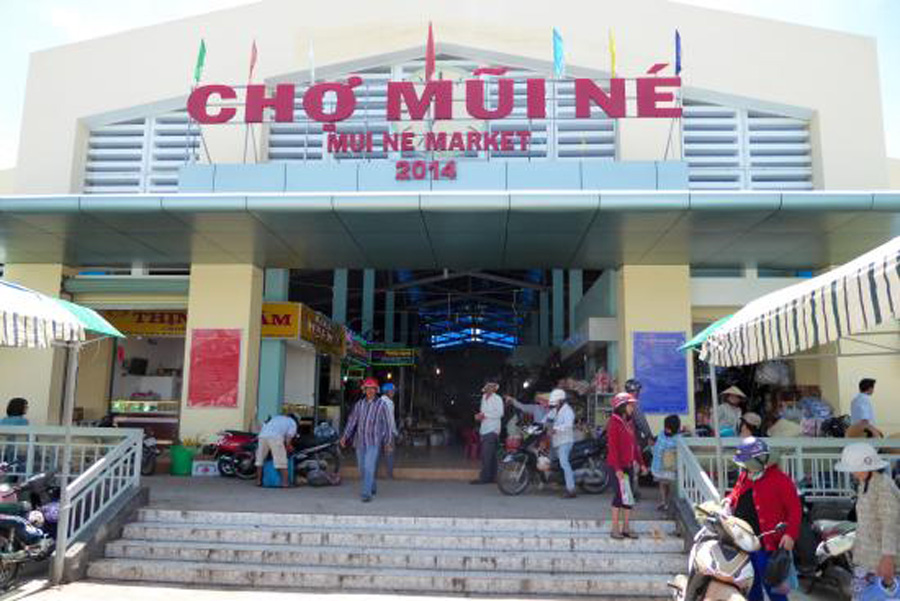 Mui Ne Market
Mui Ne Market
Getting to the enchanting coastal town of Mui Ne is a journey filled with diverse transportation options. For those arriving by air, Tan Son Nhat International Airport in Ho Chi Minh City serves as the gateway, with domestic flights connecting to Phan Thiet, the nearest airport to Mui Ne. Travelers seeking a scenic route can opt for the train, enjoying picturesque views as the rail journey unfolds from Ho Chi Minh City to Phan Thiet. Buses, a practical and budget-friendly choice, run regularly between Ho Chi Minh City's Eastern Bus Station and Mui Ne, providing a comfortable land route.
Alternatively, renting a car or motorbike offers flexibility for those who prefer a self-guided adventure, taking in the coastal landscapes along the way. For a hassle-free experience, tour packages from Ho Chi Minh City are available, offering a comprehensive exploration of Mui Ne's highlights. Whichever mode of transport one chooses, the journey to Mui Ne promises a blend of convenience, adventure, and the anticipation of discovering this coastal gem in Vietnam.
See more: Highway 4 Trail Motorbiking 9 days
Travel with Asia King Travel on our "Mui Ne Beach Holiday 5 days" excursion and...
Join the Mui Ne Beach Tour 3 Days to witness a stunning sunrise while riding a j...
The Ho Chi Minh Mui Ne Da Lat Tour 4 Days offers a perfect blend of natural beau...